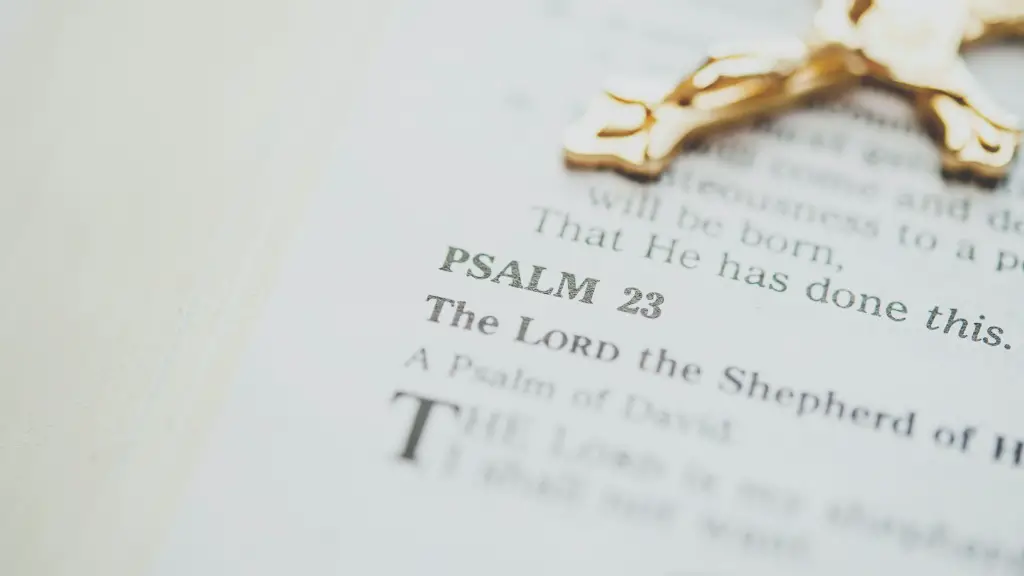Linking Dinosaurs to the Bible
The world of dinosaurs and the Bible: it’s a topic that has fascinated people for generations, yet it remains largely a mystery. To begin to understand, we must first explore the depths of ancient artifacts and fossils that suggest these creatures lived on earth millions of years ago. It is the purpose of this article to explain the varying viewpoints and sources regarding the origin of dinosaurs and their relationship to the Bible.
Though science and religion are often thought of as opposing entities, it is possible to merge the two doctrines with regards to dinosaurs. Even though the majority of scientific evidence suggests dinosaurs roamed the Earth for tens of millions of years, early Christian scholars believed them to have been living at the same time as humans. By stopping to consider why a majority of Christians believe this to be true, we can begin to make sense of the varying views.
Many of the early church fathers and other Christian figures believed in a literal interpretation of the Bible and they interpreted creatures like dragons as dinosaurs. From their viewpoint, the “dragons” from the Bible were believed to be terrifying horned monsters that fit descriptions of theropod dinosaurs. This notion is the basis for the majority of Christian belief in the co-existence of humans and dinosaurs.
Another contributing factor is the belief in a young Earth where humans and dinosaurs existed together. This is largely due to the misapplication of the biblical chronology of creation and its 6 days of 24 hours. To many, “young Earth” implies that humans and dinosaurs lived together, which has since been refuted by science. Though there is no empirical evidence that dinosaurs and humans were alive at the same time, the idea still stands in many Christian circles.
Though theories of dinosaurs and humans living together are not supported by science, there are still other prevailing theories to consider. A useful tool to understanding dinosaurs in the Bible is a theistic evolutionist understanding, suggesting that dinosaurs were meant to serve God’s purpose in the long history of the Bible. This allows for dinosaurs to exist without conflicting with a literal interpretation of the Bible.
Though theistic evolution allows us to view dinosaurs as possible participants in the Bible, there’s still the question of where these creatures fit into the Biblical narrative. Many of the ideas posed are that dinosaurs were mentioned in the Bible, figuratively or otherwise. For example, Ezekiel 32 states that God defeats a “great monster” that some have interpreted as a dinosaur. Others posit that fossils and similar ancient artifacts are physical evidence of events from the Bible.
There is also the notion that God created dinosaurs, as is implied in Genesis. This idea is often used to reconcile the idea of a young Earth with scientific evidence that dinosaurs existed for many millions of years. For many Christians, this theory is the most accepted explanation for the origin of dinosaurs.
The Impact Dinosaurs Had on Bible Interpretations
Now that we’ve explored some of the major theories regarding dinosaurs, let’s consider how fossil discoveries and archaeology have influenced Biblical interpretations. In the 17th century, when fossils were first discovered, many people were hostile to them because they thought they were counterfeit replicas of God’s creations. This belief was shared by many Christians who felt that accepting these fossils as evidence of an ancient history threatened their religious doctrines.
It was only in the 19th century when scientists began to accept fossils and dinosaurs as evidence of prehistoric creatures that religious figures began to accept them and incorporate them into their faith. Even today, we can see how fossils and dinosaurs have had a major impact on how we read and interpret the Bible. To some, fossils have provided physical evidence of many of the stories told in the Bible, while to others, they provide a way to reconcile the creation story with scientific evidence.
However, there are still those who deny Christian interpretations of dinosaurs — namely, those who believe in the theory of evolution. This has led to much controversy over the years, with some groups denouncing the existence of dinosaurs altogether. Despite this, the impact dinosaurs have had on Bible interpretations cannot be understated.
Impact of Dinosaurs on the Christian Church
In conclusion, although scientific evidence of dinosaurs is hard to ignore, the debate over their presence in the Bible is still at the forefront of many Christian circles. This debate can be seen in certain denominations that reject evolutionary interpretations while simultaneously questioning the literal interpretation as well.
Although there is much contention among scientists and religious scholars regarding the origin of these creatures and where they fit into the Bible, the impactleft by their presence on the Christian Church has been immense. Their arrival has inspired religious dialogue and reexamination of interpretations and had a profound effect on our understanding of the Bible.
Conclusion of Biblical Link Between Dinosaurs and Bible
In summary, dinosaurs continue to fascinate people of all kinds, from scientists to religious scholars, and have sparked many debates. The majority of scientific evidence suggests that dinosaurs roamed the Earth for tens of millions of years before humans, while many Christians believe in a literal interpretation of the Bible that suggests they lived at the same time.
Both sides can agree, however, that dinosaurs and their fossilized remains have provided a wealth of information that has informed our understanding of the Bible and has had an immense impact on the Christian Church. Ultimately, the source of these creatures and their role in the Bible is something that continues to be discussed and analyzed.
Interactions Between Dinosaurs and Human Beings
In spite of the popularity of the notion of a human-dinosaur co-existence, it remains clear that no verifiable evidence exists to either confirm or deny such a relationship. Some theologians assign spiritual, rather than physical, interactions between dinosaurs and human beings. According to this idea, God could have used dinosaurs to teach humans about His power and holiness. In this construct, the fearsomeness of dinosaurs may have served to draw the attention of His people to His greatness.
In the book of Isaiah, a passage reads, “And the Lord of hosts mustereth the host of the battle. They come from a far country, from the end of heaven, even the Lord, and the weapons of his indignation, to destroy the whole land.” This could be an example of God using fearsome creatures – in this case dinosaurs – to demonstrate His might.
The book of Job describes creatures that sound a lot like dinosaurs, such as Behemoth and Leviathan. The description of Behemoth includes his ability to drink up a river, which some might say could be compared to a sauropod dinosaur. The book of Job paints a vivid portrait of wild animals in the ancient world, and does not exclude the possibility of large, powerful dinosaurs living among them.
Reiterating the Inevitable Uncertainties
In the end, it is important to note that the issue of human-dinosaur interactions is far from being resolved. Until recently, scientists thought they were millions of years apart in terms of origin. Even if it were determined that they were alive at the same time, there is no way to ascertain the exact way in which they may have interacted.
Furthermore, the idea that scripture could provide an answer to a question that science is unable to answer is a source of debate itself. Even if humans and dinosaurs did co-exist, it could be argued that God created them as completely separate species that interacted very little if at all. This brings back the notion of spiritual interactions in which God might have used them to exemplify His greatness to His people.
Although much can be said on the topic, ultimate certainty is impossible and remains open to interpretation. The debate of where dinosaurs fit in the Bible will persist due to the inconclusiveness of the evidence.
Exploration of Ancient Texts and Cultural Myths
Beyond the scope of religious views on the existence of dinosaurs, one must also consider the interpretations from ancient texts and cultural myths. Many early cultures had stories about dragons and other mythical creatures, which could have been derived from sightings of these large prehistoric creatures. Some cultures may have assigned spiritual connections to these creatures, as artifacts from Asia and Europe with dragon-like representations suggest.
These ancient interpretations of dragons, which could have been inspired by dinosaurs, have been discussed and debated for centuries. The idea of an ancient god-like creature from our past continues to capture the public’s imagination and remains a popular topic in both religious and scientific discussions.
Finally, it is worth noting that there has been increased interest in dinosaurs in recent years, as both religious groups and scientists seek to further their understanding of these creatures and their role in the Bible. This is evidenced by the many books, films, and scientific studies that are devoted to exploring the issue. It is clear that the fascination with dinosaurs will continue to evolve and remain a subject of debate for years to come.





